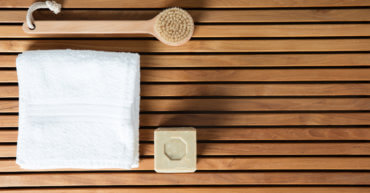August 21, 2020
An Unwelcome Summer Guest – MOLD

By Julie Gregory, Chief Health Liaison for Apollo Health.
Hi friends,
Along with the heat and humidity of summer, can also come mold. While it can be problematic every season of the year, areas of the country that experience high humidity are particularly vulnerable in the summer. If any part of your home is exposed to humidity or moisture for any length of time, this opportunistic fungus can thrive and spread through lightweight mold spores in the air of your home. Healthy people who are able to detoxify well can tolerate small and even moderate amounts of mold exposure without symptoms, while those who are genetically predisposed and/or who already have an elevated toxic burden can become very sickened from mycotoxins — toxic chemicals present on spores and small fragments of mold and fungus that are released into the air.
In fact, Dr. Bredesen published a paper in 2016, Inhalational Alzheimer’s disease: an unrecognized—and treatable—epidemic, detailing how exposure to mycotoxins (and other toxins) can lead to a distinct form of cognitive decline, typically affecting younger people (late 40s to early 60s), usually non-ApoE4, with cognitive deficits such as difficulty with math, speech, an inability to execute effective decision making and planning, that is often accompanied by depression. Dr. Bredesen has labeled this Alzheimer’s subtype as type 3 (toxic) Alzheimer’s. Interestingly, researchers at Mayo Clinic recently announced that they’d observed this same type of Alzheimer’s disease, corroborating Dr. Bredesen’s earlier findings. His clinical work has revealed that type 3 (toxic) Alzheimer’s affects approximately 60% of all cases, most often in conjunction with other Alzheimer’s subtypes. Type 3 (toxic) Alzheimer’s is turning out to be the most resistant to treatment, but he is seeing promising results with some patients.
The good news is that there are many steps you can take to minimize mold and prevent it from taking up residence in your home.
• Have your roof, basement, or crawlspace proactively inspected for moisture before you see visible water damage or mold. A leak in the roof and/or moisture from the ground are the two most common ways that mold gets into a home. Any room in your home with plumbing is also susceptible.
• To protect wooden cabinets, that are especially vulnerable to mold spores, keep plastic dish tubs under every sink in your home, directly under each faucet. Periodically check to see if any water has collected.
• Always run the bathroom exhaust fan while you bathe or shower and keep it running until all moisture has abated. After showering, use a squeegee to remove excess water from the walls of your shower. Follow with a quick towel dry of your tub or shower. Leave your shower door open to allow air circulation.
• In the laundry room, check to ensure that your dryer hose connection is secure. Any condensation is a sign that the connection is loose, and you are increasing humidity and susceptibility to mold on the drywall behind the dryer and in any wooden cabinets attached to the wall.
• Try to maintain a humidity level between 30 and 50 percent. You can purchase an inexpensive handheld humidity detector ($15) to check each room of your house. The basement or crawlspace is especially important. If humidity is too high, consider installing an industrial dehumidifier to maintain the same low level of humidity as the rest of your home.
• When running your air conditioning in the summer during periods of high humidity, especially when there’s a big difference between indoor and outdoor temperature, be on the lookout for condensation on the inside of your windows. Keep the inside of your windows dry to prevent mold from growing.
If you have any water damage, visible signs of mold (which can be black, white, green, orange, or purple), or any family members who are unwell after spending time in your home, consider mold testing to quantify the extent of the problem. Possible symptoms from mold exposure are broad and varied, including fatigue, weakness, pain, headache, sinus symptoms, cough, GI issues, cognitive manifestations, temperature dysregulation, tremors, and more. See Surviving Mold for an exhaustive list of symptoms and much more information.
The best way to test for mold in your home or workplace is by using a test called the Environmental Relative Moldiness Index (ERMI), developed by the U.S. Environmental Protection Agency for indoor mold analysis. This do-it-yourself test uses state-of-the-art DNA testing of mold-specific quantitative polymerase chain reaction (MSQPCR) to quantify 36 different molds. It calculates an index number for comparison with a database of reference homes. It can be very helpful in determining whether or not your home or place of work has unacceptable levels of toxic mold. You can learn more about ERMI and order this test directly from Mycometrics.
Those who have symptoms of mold illness, especially cognitive decline, with high levels of mold in your home, should consider working with a Bredesen-trained physician who is specialized in this area. Reach out to info@ahnphealth.com for more information. You may also need to do some remediation to your home to address the issue. It’s important to work with a professionally trained remediator who is familiar with mold sickness. Mold Control on a Budget has a wealth of helpful information to help you choose a qualified contractor. It’s also critically important to stay out of the home during the remediation process.
Regardless of the current level of mold in your home, you can adopt the measures described above to prevent further spread. Remember, it’s the overall toxic burden that contributes to toxin-related illness, and concurrently optimizing detoxification pathways is critical to healing. Apollo Health subscribers can log in and read DETOX: Beware of Dementogens for detailed information.
Be well-
Julie




